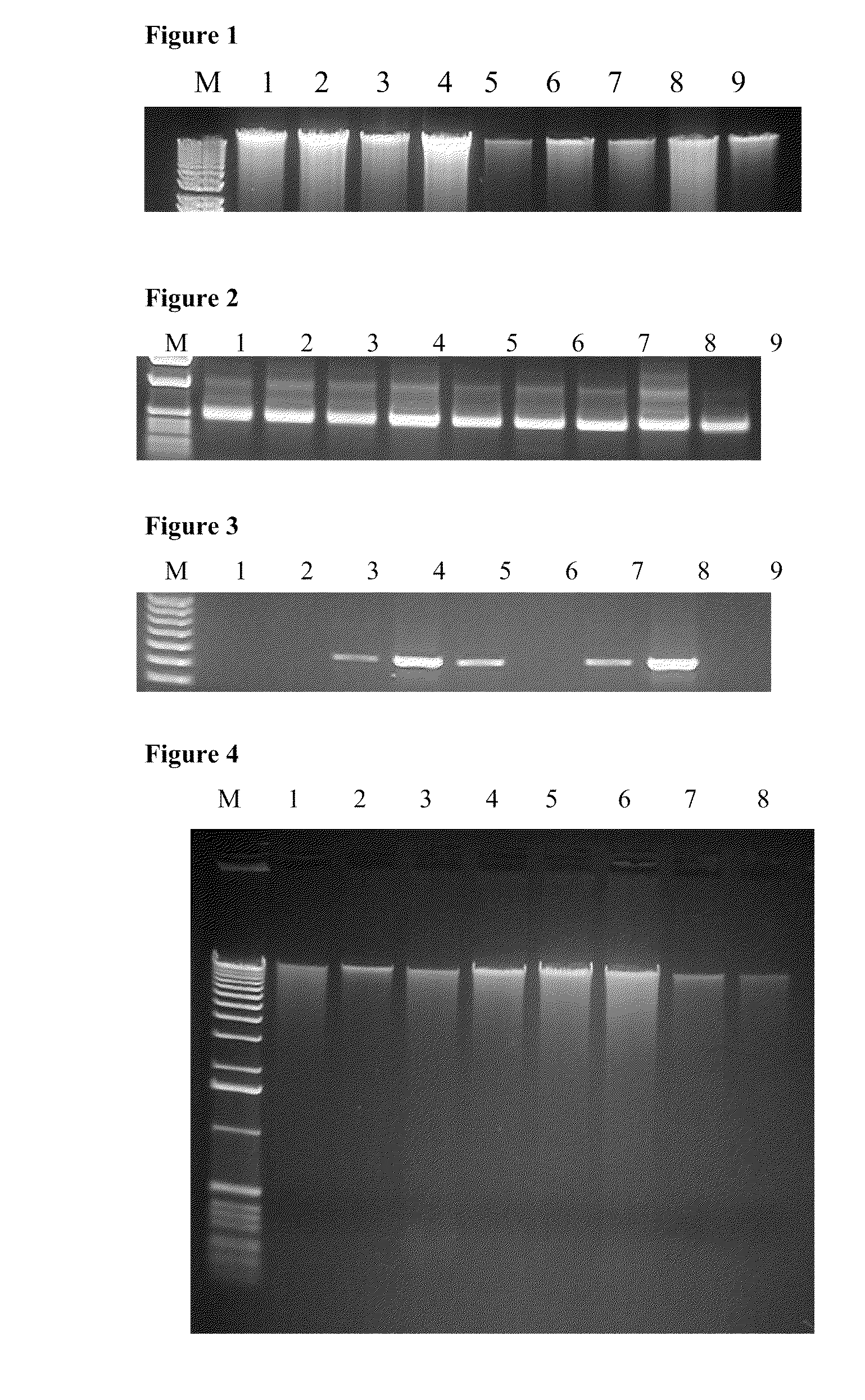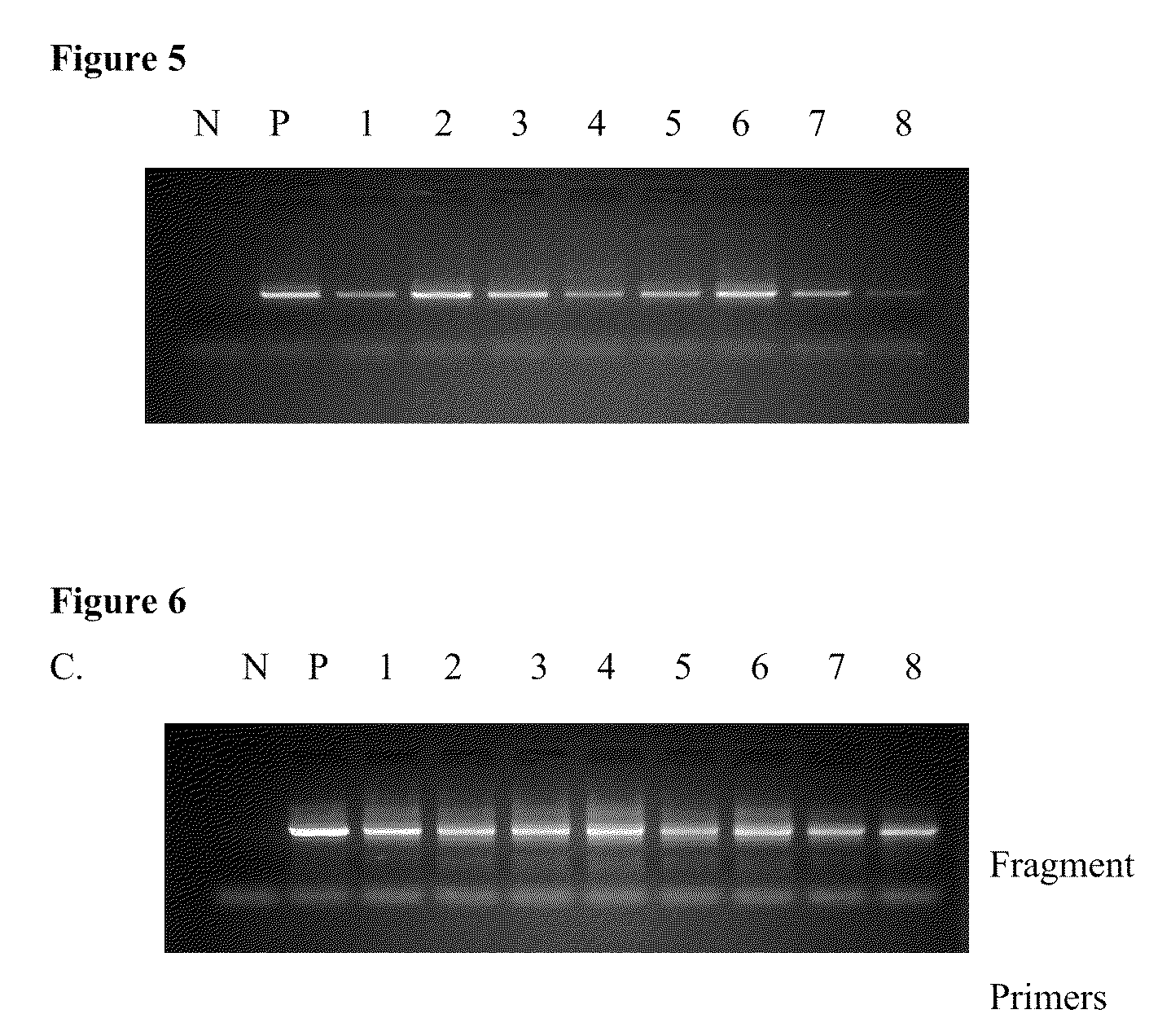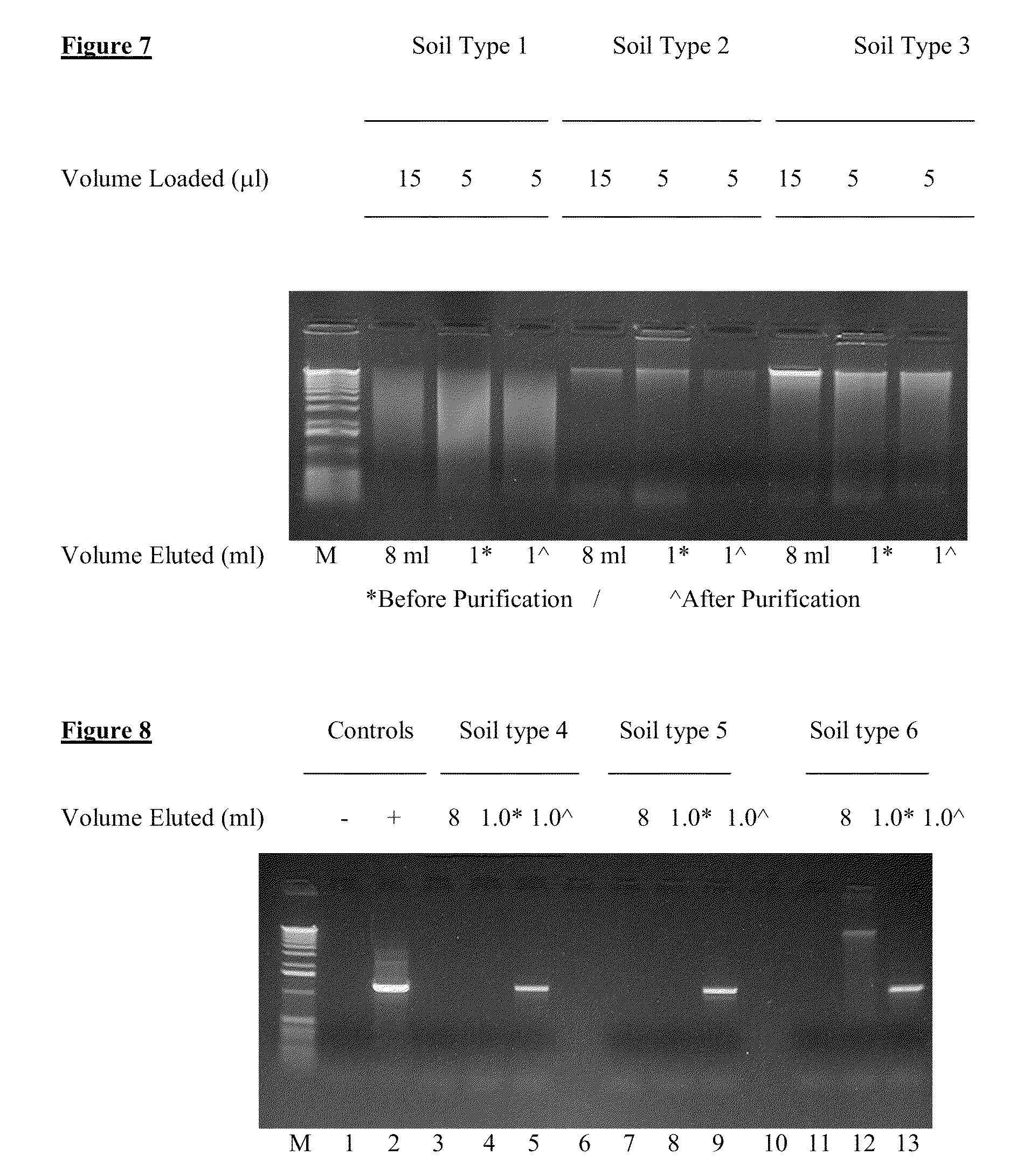Kits and processes for removing contaminants from nucleic acids in environmental and biological samples
a technology of nucleic acids and processes, applied in the field of kits and processes for removing contaminants from nucleic acids in environmental and biological samples, can solve the problems of inability to work for any other soil type, inability to achieve organic ratio, and relatively slow success rate of soil and plant genomic analysis, etc., to achieve the effect of increasing the accuracy and/or efficiency of nucleic acid
- Summary
- Abstract
- Description
- Claims
- Application Information
AI Technical Summary
Benefits of technology
Problems solved by technology
Method used
Image
Examples
example 1
DNA Isolation from up to 250 Milligram of Environmental Sample
[0099]The following example describes an exemplary purification process of the invention. Nucleic acid from several different soil types was isolated and examined using the method describe herein. The kit and method were tested on soils, sediments, composts and manure representing a broad range of organic carbon and nitrogen content and varying sand / silt / clay compositions. The same kit was also tested and found to be effective in isolating DNA free of contaminants from plant tissues such as leaves, roots, stems and seed materials Specifically, for soils, there were nine samples, which included landfill 0-3 inches deep; landfill 3-6 inches deep; late-stage compost; coffee compost; marine sediment; lake sediment; mud sediment; horse manure and mulch-top soil. DNA was extracted from these samples using the method described herein and analyzed by agarose gel electrophoresis to determine DNA quality by visually identifying a d...
example 2
Purification of DNA Extracted from up to 10 Grams of Soil
[0118]The following example describes an exemplary purification process of the invention.[0119]1. Add up to 10 grams of sample to a soil bead tube containing 15 ml bead solution.[0120]2. Briefly vortex the samples and add 1.2 ml of C1.[0121]3. Place the tubes on a vortex adapter (Mo Bio Laboratories, California) and vortex the tubes on the highest setting for 10 minutes.[0122]4. Centrifuge the tube at 2,500×g for 30 seconds at room temperature and transfer the supernatant to a new tube.[0123]5. Add 5 ml of C2 and vortex to mix. Incubate the sample at 4° C. for 10 minutes and then centrifuge the tube at 2,500×g for 4 minutes at room temperature. Transfer the supernatant to a new tube.[0124]6. Add 4 ml of C3, invert to mix and incubate at 4° C. for 10 minutes.[0125]7. Centrifuge the tube at 2,500×g for 4 minutes at room temperature. Transfer the supernatant to a new tube.[0126]8. Add 30 ml of C4 to each tube and mix by inversion...
example 3
Procedure for Removing Contaminants from Nucleic Acid
[0135]The following exemplary purification process of the invention produces nucleic acid that may be used in downstream processes from previously purified nucleic acid that has contaminating substances that have prevented use of the nucleic acid in a downstream application (e.g. PCR). The nucleic acid was isolated using the ULTRACLEAN MEGASOIL DNA ISOLATION KIT and processed using the procedure and reagents indicated below and analyzed (FIG. 7,). The nucleic acid was tested in PCR (FIG. 8).
[0136]Nucleic acid was purified from 3 different environmental samples (identified by 8 ml). The nucleic acid was analyzed by 0.8% TAE agarose gel electrophoresis and ethidium stained for detection. The soil types are identified below. The DNA was concentrated to a volume of 1 ml using isopropanol precipitation and is presented in the lanes labeled 1*. The nucleic acid in 1* was processed with the contamination removal protocol and reagents des...
PUM
| Property | Measurement | Unit |
|---|---|---|
| molecular weight | aaaaa | aaaaa |
| molecular weight | aaaaa | aaaaa |
| pH | aaaaa | aaaaa |
Abstract
Description
Claims
Application Information
 Login to View More
Login to View More - R&D
- Intellectual Property
- Life Sciences
- Materials
- Tech Scout
- Unparalleled Data Quality
- Higher Quality Content
- 60% Fewer Hallucinations
Browse by: Latest US Patents, China's latest patents, Technical Efficacy Thesaurus, Application Domain, Technology Topic, Popular Technical Reports.
© 2025 PatSnap. All rights reserved.Legal|Privacy policy|Modern Slavery Act Transparency Statement|Sitemap|About US| Contact US: help@patsnap.com



